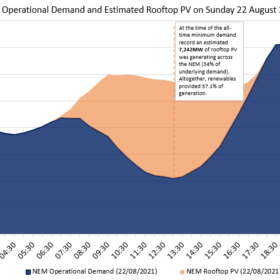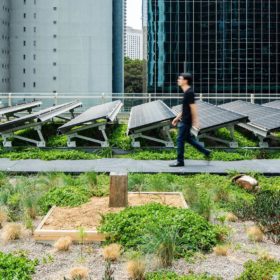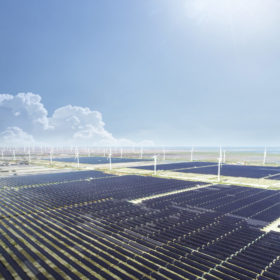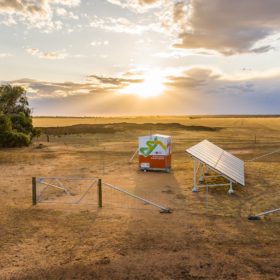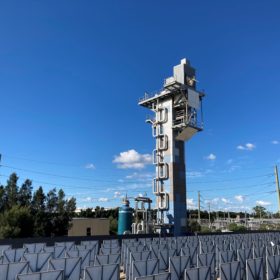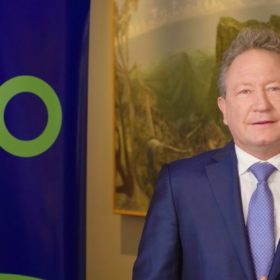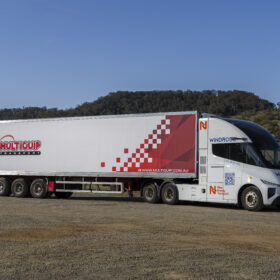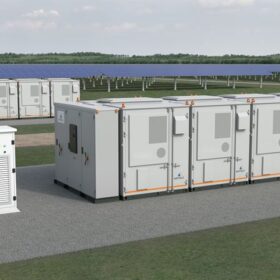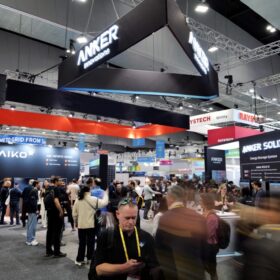Solar eclipses coal for first time, setting renewable record
For the first time in the history of our national energy market, solar generated more electricity than coal, providing 41.4% of the national market on Sunday, while coal accounted for 41.2%.
Green roof improves solar panel efficiency by 3.6% on average, study finds
The comparison of two solar cladded roofs in Sydney, one bare beneath its panels and the other adorned with native grasses and plants, has found the panels on the green roof were, on average, 3.63% more efficient, producing an average daily output 13% greater than the conventional roof. The improvements are believed to stem from the lower temperatures on the green roof, thanks to its plants – which also provided a plethora of additional benefits.
Sunday read: China’s battery storage awakening
China’s efforts to shift electricity generation from a coal-dominated system to a greener mix of renewables is not only centred on wind, solar and other technologies – the country is also rapidly pursuing energy storage. Vincent Shaw reports from Shanghai.
Saturday read: Scaling up standalone power systems
As technology redefines the delivery of network services, grid operators in remote areas the world over are searching for more cost-effective and reliable alternatives to traditional poles and wires. Standalone power systems are the solar application that is at the forefront of the switch, and they’re ramping up fast.
CSIRO commits to net zero emissions target
Australia’s Commonwealth Scientific and Industrial Research Organization plans to use its Newcastle Energy Centre – home to the largest high-concentration solar array in the Southern Hemisphere – as a demonstration site for its newly announced net-zero emissions targets.
Australian scientists set out to use wastewater for green hydrogen electrolysis
Australia has the sun, the wind and the space to become one of the world’s green hydrogen export superpowers in coming decades. However, the Sunburnt Country does have a dearth of one ingredient in the green hydrogen equation – freshwater. Thankfully, researchers from Monash University and a group of national water utilities are joining forces to find a way to use wastewater for the process of electrolysis.
Dubai project promises ‘customised, walkable’ building PV
The new headquarters planned by DEWA is intended to consume no more annual electricity than it generates, from a large volume of rooftop and building-integrated PV.
Twiggy Forrest’s green hydrogen ambitions will require renewables at 3x Australia’s total energy consumption
In a campaign style speech, Andrew ‘Twiggy’ Forrest, founder of Fortescue Metals and one of Australia’s richest men, outlined his ambition of producing mammoth quantities of green hydrogen, a task he sees as imperative to stop the “planet cooking” while also cornering a market he believes will soon be worth trillions.
Union boss says renewable industries must do better by workers: ‘they’re fighting because they’re proud of their legacy’
President of the Australian Council of Trade Unions, Michele O’Neil, says renewables industries have fallen short in their treatment of workers and urgently need to do more to provide quality jobs which are secure and fairly paid.
How solving energy poverty could afford renewables a twofold opportunity
Solar as a solution to poverty – it’s the route Brisbane-based charity SolarBuddy is taking, bringing Australian school children with it. Crucially though, the charity’s founder Simon Doble told pv magazine Australia it’s also a unique opportunity to learn about the rollout of clean technologies unencumbered.
